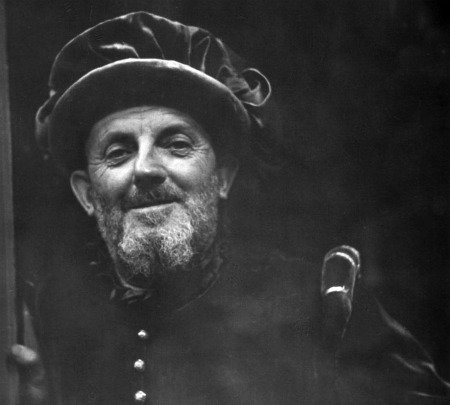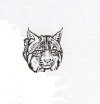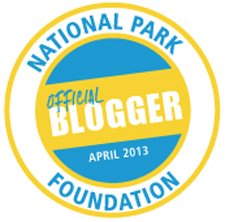The Ahwahnee Yosemite Hotel And The Bracebridge Dinner...
Remembering Christmas Celebrations At The Ahwahnee


"The Bracebridge Dinner at the Ahwahnee Yosemite hotel" : This Historic Bracebridge Program is available to you here through the kindness of the Ansel Adams Trust.

And How It All Began

Bracebridge at The Ahwahnee represents the growth of a tradition already
old when in 1819 Washington Irving published his account of the
Christmas festivities.
The account appeared in the Sketch Book with a whimsical epilogue
attesting to its authenticity. A century or so later in 1921 the
Christmas Dinner was re-enacted in the great dining hall of the hotel,
the very year The Ahwahnee first opened in Yosemite.
The
choice of inspiration for the Christmas festivities was fortuitous. The
charm of Washington Irving's tale comes as much from the feeling of the
surrounding countryside which he weaves in and out of the text as from
the delight he takes in describing the old traditions.
Likewise
the charm of the Ahwahnee dining room comes in large measure from the
guest's constant awareness of the Yosemite Valley itself.
At
Christmas time this awareness is augmented by the twinkling lights that
illuminate a staunch cedar visible through the tall windows and by the
villagers who can be seen carrying their lanterns through the snow as
they come to the Hall to enjoy the genial hospitality of Squire
Bracebridge.
Bracebridge Hall in Yorkshire was a rambling manor-house with a great oaken hall where on Christmas day the jovial Squire entertained his guests at a hearty feast patterned after feasts of old.
In grandeur of scale The Ahwahnee dining room recalls the baronial halls of England. Equally the banners that on Christmas hang from the beams are reminiscent of ancient heraldic banners.
The "beaufet" or oaken sideboard, like the Squire's, is decorated with plate and two traditional Yuletide candles wreathed in greens.
Above the sideboard rises the lofty Bracebridge window. It tells the Christmas story and harmonizes in the telling with the beauty and nobility of the scene which nature unfolds in Yosemite during the holiday season.
Enthroned in an aureole form the Virgin Mary holds the Christ Child on her knee while four angels offer incense and shepherds gaze from below in adoration. The color, a lacquer paint on parchment, is the rich color of medieval stained glass: ruby red, deep blue, green, a little yellow, and a glowing lavender pink.
There are other yuletide windows, roundels representing traditional festivities of the holiday season. Two show the Morris dancers the Squire welcomed to the Hall Christmas morning. Maid Marian and Tom fool crowned with a foxskin dance gaily in one.
In the other, two knights, Saint George and the Black Prince of Paladine, battle lustily. A third roundel depicts the trained bear and the hobby horse who in bygone times shared in the village revelries. A fourth represents the Druids gathering mistletoe.
The Parson, a guest of the devout old Squire, objected to the use of mistletoe with the garlands of ivy and holly for, he observed, the mystic rites of the Druids had profaned the small waxlike berries.
At The Ahwahnee the little scene of the Druids gathering mistletoe is there to warn guests of the danger inherent in its use.

The Squire enjoyed minstrelsy and listened approvingly to the old Boar's Head carol sung by an obliging young visitor.
The
Parson, an old Oxonian, vehemently expressed his preference for the
Queen's College version. The Squire however, though an Oxonian himself,
was less concerned with authenticity of detail than with the spirit of
the Christmas tradition and watched with lively interest the portrayal
of old-time pageantry by the younger members of his household.
This
was fortunate, for though the elderly Housekeeper had opened the
manor-house wardrobes and clothes presses to provide relics of ancestral
finery, it was evident that one young blade was more interested in
cutting a picturesque figure than he was in antiquity.
Years
do little to human nature. From the beginning, when Garnet Nolme was
invited to produce the first Bracebridge Pageant at The Ahwahnee, it was
found that the participants, being for the most part amateurs bent on a
holiday in Yosemite, were more interested in their appeal to their
public than in olden times in England.
So, details such as
the length of a tunic are left to the caprice of the wearer and, from
the past, comes the decorative quality of Tudor dress and the rich color
of the Dark Ages.
The pageantry of the Bracebridge
Ceremony, though always relating to Washington Irving's Sketch Book, has
developed far beyond the simple rites enjoyed by the old Squire.

The very first year a robust male chorus from the Bohemian Club preceded
the colorful procession of historic Yuletide dishes into the Hall.
This
chorus was retained as an essential element of the pageant when, on the
death of Garnet Holme in 1929, Ansel Adams was invited to produce the
Bracebridge and to develop it into a musically more authentic Christmas
ceremony worthy to be perpetuated throughout the years as an appropriate
undertaking in Yosemite.
At the same time the writer was asked to continue the decoration of the Hall already begun by her Christmas window and to costume the participants.

The pageant directors have always had many able and indispensable assistants, the so-called "pantry boy" who takes charge of the decoration of the litters on which the different dinner courses are carried to the Squire, and the pastry cook who outlines the ears of the boar's head and places the final ridges along the spine of the baron of beef.
The Ahwahnee chef himself should not be overlooked for to the practice of his culinary art he adds the synchronization of the dinner with the pageant.
Then there are all the willing hands, some guest, some hotel personnel, who immediately the last luncheon guest leaves the dining room Christmas day arrange the plate on the buffet, decorate the banquet board, and, as the finishing touch, nail down the two wooden dogs who every year beg the Squire for table scraps.
The Bracebridge Ceremony has always been a community undertaking and not only behind the scenes. The first Squire was Dr. Donald B. Tresidder, then president of the hotel company and later president of Stanford University.
He and Mrs. Tresidder in the early days had as table guests members of the family, the Superintendent of the Park, and for many years Herman Hoss, whose sonorous voice made the lines of the Parson vibrate through the Hall.
Since the death of Dr. Tresidder, as a tribute to him, the Squire, the Parson and the Lord of Misrule have been chosen by members of the Speech and Drama Department of Stanford University.
Memorable among the later Squires is David S. Nawes. Before becoming pageant director, Ansel Adams took part in the Bracebridge as the Lord of Misrule.

He saw so many humorous possibilities for this maker of mischief that he wrote him into the text.
Nowadays Mr. Adams is the Major Domo or Butler mentioned by Washington Irving. Richly garbed he personally directs the ceremony and himself presents the flaming Wassail to the Squire, a duty he has performed ever since 1929 with the exception of the war years when The Ahwahnee was a United States Naval Hospital.
Ansel Adams has enriched the pageant with a variety of odd characters. The Bear, already noted in one of the roundels, being a native of Yosemite, appears with the Villagers.
Leading both Villagers and Waits, the traditional name for Christmas morning carolers, is the Hodening Horse. This is the fiery steed of Kent which the carousing farm servants of days gone by carried on a long stick as they went from door to door demanding gifts. At The Ahwahnee the Jawbones of the Horse are a symbol of the Villagers' right to the Squire's largesse.
There are singing characters too. The Minstrel, following medieval custom, wanders through the hall strumming ancient ballads. The first Minstrel was Ollo Baldauf. One year Richard Dyer-Bennet played the part and now the Minstrel is Doris Spencer.
The Housekeeper is more of a personage than her humble title implies. Not only must she greet all the guests as she passes from table to table but she must have a rich voice which complements the male voices of the chorus. The part was created by Virginia Adams, then sung later by Britta Ekwall.
The Parson has increased in importance since the first Bracebridge dinner and become the protagonist of the pageant.
Washington Irving described his Parson as seeming to forget that nearly two centuries had passed since the Puritans made an assault on Christmas ceremonies, denounced plum porridge as "mere Popery" and roast beef as anti-Christian, for he preached a carefully documented sermon on the propriety of observing Christmas as a day of rejoicing and gravely urged his followers to feast and make merry.
Now, the Parson preaches the same doctrine of conviviality but depends on awesome solemnity and vigorous gestures to convince his hearers rather than erudition.
The Parson's lines and the entire text of the pageant are written in a strongly metrical verse whose slow throbbing tempo is emphasized by the four beat rhythm of the carols sung by the choristers as they lead the sumptuous procession of heavily burdened servitors down the long aisle to the waiting Squire.

This text was written by Ansel Adams in 1929 and is printed in these pages along with the musical themes which he selected with as much care and attention to mood and authenticity as though he himself were the old Oxonian of Washington Irving's tale.
For many years Mr. Adams directed the music. Then due to the ever increasing demands of his photographic work he appointed Paul Ralston to take over that task.
Today it is Eugene Fulton who directs all music and who through the years has enriched the score by adding two of the most beautiful chorals: "Let All Mortal Flesh Keep Silence" and "0 Jesu So Sweet."
The list of soloists has included among others such well known names as Lorna Lachmund, Folsita Badger, Elizabeth Freeman, and Raymond Manton.
Among the accompanists are Esther Sittig and Anna-Marie Fulton. The roster of names of the many robust singers who have escorted the ancient Yuletide dishes into the Hall is too long to enumerate.
Tenors, Baritones and Basses, they all have wholeheartedly appreciated the Squire's devotion to the bygone customs of Christmas and enjoyed with him the good fellowship of Bracebridge Hall.
Jeannette Dyer Spencer
Magic

“The Bracebridge Dinner was the highlight of the Christmas season for our family, and Christmas morning began early for us in darkness and deep valley snow. Caroling would take us through the sleepy residential areas of the Park to the warmth of the Ahwahnee hotel, where we would sing as we walked the hotel hallways.
Even at this early morning hour, there was excitement in the air at the Ahwahnee as preparations for the Bracebridge Dinner and the busy evening ahead continued. As the morning progressed, Christmas music would often be heard coming from down stairs and we would scurry down to see. Quite often we would find Ansel Adams playing on the piano in the Great Lounge. Standing not much higher than the piano keyboard itself, I remember that his fingers were gnarled from the arthritis in his hands, but that the music was always beautiful and cheery.
That evening Ansel and my family would all be in costume...

We all took part in the Bracebridge pageantry. Dad's role was the reaper-like Famine of the Feast wearing flowing white sheets as he led the lantern-carrying Villagers into 'Bracebridge Hall'. We would slowly march in from the cold as he clacked the jaw of the wooden horse skull on the long wooden pole that he carried it on. I remember that after the Squire invited us in to join the festivities, Dad would respond in thanks by saying 'by my horses jawbone post thou art indeed a gracious host'.

My mom and sister enjoyed their 'Cheesemen' characters, mingling within the crowd with samples of exotic cheeses for the guests. It was an easy way to start a conversation and they both met many famous and interesting people through the years that way. It is fun to think that in some small way, my family was a part of Yosemite National Park History.”
To return to the Home Page from Ahwahnee Yosemite Hotel page click here.












